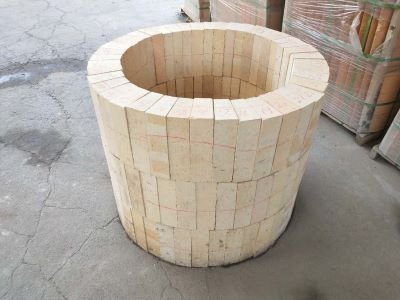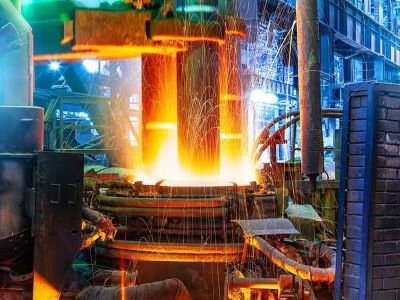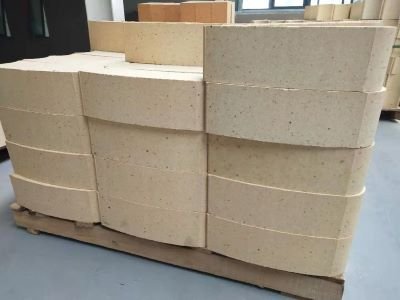In the extreme environment of steelmaking, the blast furnace lining is like a miniature fortress, constantly enduring the harsh test of temperatures exceeding 1500°C. High-alumina bricks are the indispensable cornerstone of building this fortress.
Definition and basic properties of high alumina bricks
High alumina bricks are aluminum silicate refractory materials with an alumina (Al₂O₃) content of not less than 48%. Its main raw materials include high-alumina bauxite, sillimanite, etc., and the molding process is mainly high-temperature sintering.

Firstly, the high alumina content gives it outstanding refractoriness, typically reaching temperatures above 1750°C. This is much higher than the normal operating temperature in a blast furnace, ensuring that the material does not soften or melt in such a high temperature environment.
Secondly, high-alumina bricks have a high refractoriness under load. This property allows them to withstand the combined pressures of furnace charge gravity and airflow, preventing structural deformation.
In addition, its mineral phase is mainly composed of mullite and corundum. These two crystal structures are dense, which makes the brick body have good mechanical strength and wear resistance, and can withstand the physical friction during the descending process of the charge.
Key role in blast furnaces
The operating environment in different parts of a blast furnace varies significantly. High-alumina bricks are primarily used in the upper and middle sections of the furnace shaft, as well as in the furnace waist and bosh.

Specifically, the temperature in the upper middle section of the furnace is relatively low (800°C-1200°C). However, this area is subject to friction from the charge and erosion from the airflow. The high strength and wear resistance of high-alumina bricks effectively slow down lining wear in this area.
In the furnace waist and bosh areas, temperatures rise, accompanied by slag erosion and chemical attack from alkali metals. Here, the slag resistance of high-alumina bricks becomes critical. Their low porosity and dense structure can hinder slag penetration, reducing damage to the brick structure caused by chemical reactions.
High-alumina bricks also offer excellent volume stability. This means they are less susceptible to cracking during temperature fluctuations and can withstand the thermal shocks associated with intermittent operation or fluctuating operating conditions in blast furnaces.
Core performance that needs attention when selecting high alumina bricks
When selecting high alumina bricks, it is necessary to combine the specific working conditions and design requirements of the blast furnace and focus on evaluating several core indicators.
First, the alumina content is fundamental. A higher alumina content generally increases refractoriness and slag resistance. Of course, this also comes at a cost, so the choice must be balanced based on the site temperature and corrosion severity.
Secondly, porosity directly affects erosion resistance. Low-porosity bricks can reduce slag penetration channels and extend service life, but construction performance must be taken into consideration.

Furthermore, thermal shock stability is crucial. When the blast furnace is started or shut down or the operating conditions are adjusted, the temperature changes suddenly. If the bricks have poor thermal shock resistance, cracks or even peeling may occur, causing the lining to fail.
In actual applications, choosing a high-quality refractory brick supplier with technical strength and production experience can also ensure the stability of material performance and provide guarantee for the long-term and efficient operation of the blast furnace.
